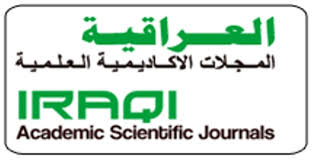Conceptual art and its role in awareness campaigns
DOI:
https://doi.org/10.59767/bfj.5300.1983Keywords:
Conceptual, Campaigns, Audience, AdvertisementsAbstract
Conceptual or conceptual art considers the idea to be the machine that produces art, and the plan becomes by using artistic tools such as line, space, color, simile and etaphor in the service of the idea communicating with the recipient in an nteresting and non-traditional way and can attract the recipient and provoke his thinking and support the message contained in the design of the idea, so conceptual art played a role Important in these campaigns, through the idea, the art was able to transform the advertisement into a visual image with two dimensions that attracts the mind and arouses attention. Accordingly, the structure of the study was established in four chapters, in which the first chapter (the methodological framework of the research) came from the research problem, which is summarized in the following question :
What are the basic steps required for the success of awareness campaigns?
The importance of the research and the need for it, and the aim of the research, were determined by defining the intellectual dimension of conceptual art, the objective and temporal limits of research, and the spatial limits, then defining and defining the terms. The role of conceptual art in educating the community) and then came the third chapter (research procedures) and the researcher identified the research community consisting of approximately (17) works of art.
References
Abbas, M. A., & Al-kinani, A. A. (2022). Intellectual Implications of the Duality of Mother and Child in the Social Perspective. JOURNAL FOR EDUCATORS, TEACHERS AND TRAINERS(13), pp. 229–237. doi:https://doi.org/10.47750/jett.2022.13.04.032
Aldaghlawy, H. J. (2021). color connotations with costumes in the performances of the school theater. Cambridge scientific journal(7), pp. 239-260. doi:https://doi.org/10.5281/zenodo.7787343
Al-Obaidi, J., & Al-Mehna, F. K. (No date). Mass Communication. Baghdad: Baghdad University Publishing.
Amhaz, M. (2009). Contemporary Artistic Currents. Beirut: Publications Company for Distribution and Publishing.
Badawi, A. Z. (1975). The Dictionary of Social Sciences Terminology. Cairo: The General Book Authority.
Balassem, & Jabbar, S. (2015). Contemporary Art, Its Methods and Attitudes. Baghdad: The National Library.
Ismail, I. (2014). Contemporary Media, Its Methods, Skills, Influence, Ethics. Qatar: Ministry of Culture, Arts and Heritage for Publishing.
Jan, B. (1970). Research in Aesthetics. Cairo: Nahdat Misr Publishing House.
Janan, M. (2014). Contemporary Epistemology and the Structural Art of Postmodern Formation. Library of Arts and Literature, first edition.
Jenzy, H. T. (2020). Body Transformations in Drawings the Artist Muhammed Mehraddin. Al-Academy(95), pp. 143–160. doi:doi.org/10.35560/jcofarts95/143-160
Madkour, I. (1975). The Dictionary of Social Sciences. Cairo: The Egyptian Book Organization.
N. S. (1986). The Theater Between Art and Thought. Cairo: the Egyptian General Book Authority Press.
Sawsan, & Riyad, H. (2029). video image Art between treatment and concept. Journal of Arts, Literature, Humanities and Sociology.
Smith, E. L. (1995). Art Movements After World War II. Baghdad: General Cultural Affairs House.
Suzanne, B. (2016). Awareness - a very short introduction. (M. M. Fouad, Trans.) Egypt: Hindawi Publishing Corporation.
Downloads
Published
How to Cite
License
Copyright (c) 2023 Ali Adel Fouad, Bahaa Abdul Hussein Majeed

This work is licensed under a Creative Commons Attribution 4.0 International License.







